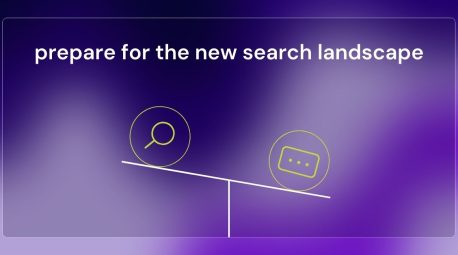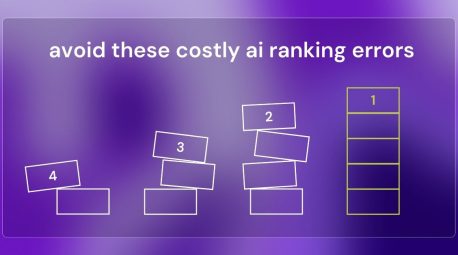The Future of Search: AI Engine Optimization vs Traditional SEO

The search game is changing — fast. While traditional SEO still drives organic traffic from Google and Bing, AI-driven platforms are shifting how people find information. AI Engine Optimization (AIEO) focuses on visibility within AI-generated results, which don’t show a list of links but instead deliver synthesized, conversational answers.
This article compares AI Engine Optimization and traditional SEO, explains where each shines, and reveals how they can work together to future-proof your search strategy.
Why Search is Splitting into Two Worlds
Search used to mean typing a query into Google and clicking through the top results. Now, platforms like ChatGPT, Perplexity, and Google’s AI Overviews are bypassing the click entirely — serving the answer directly inside their interface.
This creates two parallel search ecosystems:
- Traditional SEO-driven results (ranked lists of pages)
- AI-driven synthesized answers (contextual summaries with citations)
For brands, this shift means you can no longer rely solely on climbing SERP rankings. You also need strategies that ensure your content is cited inside AI responses.
Traditional SEO: The Ongoing Foundation
1. Keyword-Driven Optimization
Traditional SEO begins with identifying high-value keywords and crafting content that matches user intent. The right mix of head terms and long-tail keywords still drives discoverability in search engines.
Effective keyword targeting ensures you attract qualified traffic, but it’s now just one piece of a larger puzzle. Even if you rank #1 for a query, you could lose visibility if AI overviews replace the need for clicks.
2. Technical SEO
Site speed, mobile responsiveness, secure HTTPS connections, and structured data remain essential. These factors signal to Google’s algorithms that your site offers a strong user experience — a critical ranking factor.
Technical SEO improvements also support AI optimization by making content easier for both search engines and AI models to parse.
3. Content Depth & Authority
Long-form, authoritative content is still a ranking powerhouse. Google’s E-E-A-T (Experience, Expertise, Authoritativeness, and Trustworthiness) guidelines prioritize well-researched, credible information.
For AI readiness, depth and authority remain vital — but the presentation and structure must also cater to AI parsing methods.
AI Engine Optimization: The Emerging Frontier
1. AI Visibility Audits
Before you can optimize for AI, you need to understand where you stand. AI visibility audits identify whether your brand appears in AI-generated results for key queries and which competitors are cited instead.
Test your brand’s presence in Google AI Overviews, ChatGPT with browsing, and Perplexity AI. Document what kinds of sources the AI cites — authoritative media, niche blogs, or data-rich pages — then refine your strategy to match.
2. Structured Content for AI Parsing
AI models prioritize well-structured, fact-rich content they can interpret without confusion. This means optimizing for clarity and modularity.
Use clear H2/H3 headers, incorporate FAQ sections for direct answers, and include bullet points, numbered lists, and tables to format data in digestible segments. Each structured element is an opportunity to feed AI models precise, usable content.
3. Authority & Citation Building in AI
AI will only cite trustworthy, well-established sources. That trust is built through consistent credibility signals.
Publish original research that others reference, maintain detailed author bios with credentials, and actively pursue industry-specific backlinks. The more your brand is recognized as a top-tier source, the more likely it will appear in AI citations.
SEO vs AI Engine Optimization: Key Differences
| Feature | Traditional SEO | AI Engine Optimization |
|---|---|---|
| Goal | Rank high in search engine results | Be cited in AI-generated answers |
| Metrics | Rankings, clicks, impressions | AI citations, visibility in AI responses |
| Primary Platforms | Google, Bing | Google AI Overviews, ChatGPT, Perplexity |
| Focus | Keywords, backlinks, technical health | Entity recognition, authority building, structured content |
| Timeframe | Medium to long-term | Short to medium-term, evolving rapidly |
How SEO & AIEO Work Together
Treat SEO as the foundation and AIEO as the adaptation layer. Without a solid SEO base, your AI optimization will lack the credibility and content depth AI engines require.
- Start with SEO: Build authoritative, keyword-optimized content and ensure technical excellence.
- Layer on AIEO: Adapt that content for AI parsing, target AI visibility, and position your brand as a credible cited source.
This combination ensures visibility in both traditional SERPs and AI-generated responses, keeping you ahead no matter where search evolves next.
Final Takeaway
Search is no longer one-dimensional. The winners will be brands that master both traditional SEO and AI Engine Optimization — ranking high in SERPs and being cited inside AI answers.
The future isn’t SEO or AIEO. It’s SEO + AIEO, working in synergy to capture every discovery channel your audience uses.
Sperling.ai helps brands adapt their search strategies for this dual-world reality.
FAQs
- Is AIEO replacing SEO?
No — AIEO builds on SEO. Without strong SEO foundations, your AI optimization efforts won’t have the authority they need. - Which is faster to see results?
SEO is a long-term investment. AIEO can deliver faster visibility gains in AI platforms, but it’s more volatile due to rapid algorithm changes. - Can I just focus on AIEO?
Not recommended. AIEO without SEO risks losing visibility in the majority of traditional search queries still driving traffic. - Do AI platforms use the same ranking factors as Google?
No. While some overlap exists (authority, clarity, accuracy), AI platforms focus more on factual precision, entity recognition, and structured information. - How often should I revisit my AI optimization?
Every 2–3 months — AI platforms update faster than traditional search algorithms, so frequent adjustments are key.

